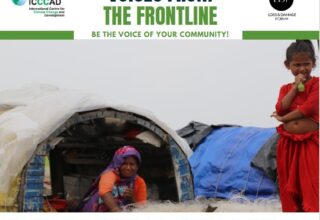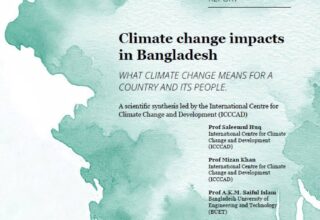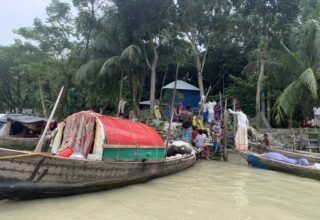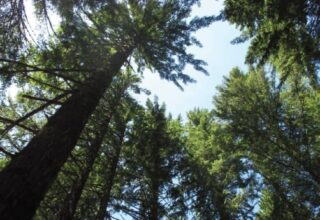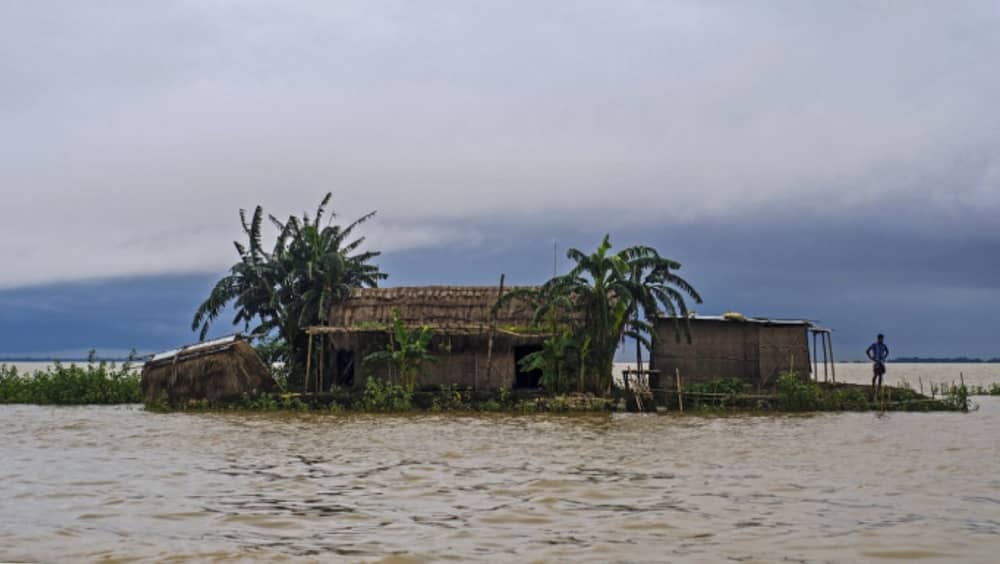
The Sixth Assessment Report (AR6) of Working Group II (WGII) of the Intergovernmental Panel on Climate Change (IPCC) was published on February 28, 2022. AR6 by Working Group I, published in August 2021, clearly stated that increasing anthropogenic activities have increased the global mean temperature by over 1°C, resulting in increased frequency and intensity of extreme weather events.
The WGII report now highlights that climate-induced loss and damage is no longer disproportionate; severe disasters in both rich and poor countries are evident now and will exacerbate in future.
However, such increase in intensity and frequency of climate-induced disasters are not new to the global south, as they have been tackling climate change impacts since the very beginning.
Bangladesh, a strong representative of climate-vulnerable nations from the global south, has received significant attention in the last few decades for its vulnerability, and recently for its role in climate change adaptation. In AR6 of WGII, Bangladesh was mentioned 430 times in total and the details are stated below:
Vulnerabilities
Projected sea-level rise is associated with groundwater contamination, freshwater scarcity, loss of biodiversity, loss in aquaculture and frequent floods. Although most of the research focuses on surface water contamination, IPCC AR6 emphasised groundwater aquifer contamination leading to long-term losses.
Around 26 million people, who live in coastal Bangladesh and in the world’s largest mangrove forest, the Sundarbans, are threatened with increasing groundwater salinity. Additionally, research revealed that the Indo-Gangetic Basin is more exposed to contamination by arsenic and salinity than depletion.
The salinity rate will further increase with land-use changes, reduced stream flows, and increased storm surge inundation. It was also highlighted in the report that deltas are more vulnerable to floods, as they are exposed to both riverine and coastal inundations.
One example of such drastic events was cited from March 2017, when floods affected 220,000 hectares of summer paddy crop that was nearly ready to be harvested.
Another analysis shows that between 2012 and 2050, the freshwater river area is expected to decrease from 40.8% to 17.1% in the southwest coastal zone of Bangladesh. Freshwater scarcity has and will further lead to a high diarrheal disease rate, increasing the disease burden in climate hot-spots leading to 2.2 million more cases of E. coli in Bangladesh by 2100.
Multiple case studies have already highlighted the cases of rising hypertension in the southern part of the country. Additionally, salinity will reduce freshwater fish availability leading to aquaculture losses. As freshwater fishes are the primary source of protein among coastal Bangladeshis, malnutrition is another undesirable consequence for the country.
Economic and non-economic loss and damage
Bangladesh, along with other LDCs, has been advocating for a loss and damage finance stream (on top of adaptation and mitigation streams) since the Warsaw Convention in 2013. However, this has been seldom reflected in funding.
This year, the IPCC mentioned how much economic and non-economic loss Bangladesh bears. Around 850,000 households and 250,000 hectares of harvestable lands were lost in climate-induced disasters; loss of agricultural land also resulted in crop failure that increased the price of rice by 30% between 2014 and 2021.
Cyclones, floods, riverbank erosion, salinity intrusion, and drought have also resulted in crop failure, alteration in fish species composition, destroyed houses and reduced livelihood options in the southern part of the country.
Additionally, frequent storm surges intrude saline water in embankments, roads, culverts, and shrimp farms making the post-disaster situation even more difficult for the communities.
Loss of lives, loss of ecosystem services, loss of psychological well-being, health impacts, and cultural loss all fall under non-economic loss and damage and are barely quantifiable, but were reflected in AR6.
Although the loss of lives has decreased in the country over the years, loss of infrastructure and houses has resulted in high rural-urban/semi-urban migration. These migrations are often denoted as forced migration and result in loss of social networks, with huge impacts on psychological health.
Such incidents were observed during Cyclone Aila in Khulna district. People were permanently dislocated from their villages due to long-term flooding following the cyclone and were unable to restore their livelihoods.
Severe damage to houses, homesteads, properties, livestock and crops, loss of family members and relatives, and uncertainty attached with employment also results in loss of psychological well-being among coastal communities.
Climate-induced disasters will lead to the extinction of certain plant & animal species and ecosystem services in the near future. For example, Hoolock gibbons in Bangladesh will be extinct by 2070 if the current situation continues.
Studies identified Bangladesh bears a loss worth of $18-$20 million, due to increasing salinity in wetlands. Climate-induced disasters are also forcing the poorest communities to turn to illegal livelihoods such as logging in Sundarbans, further increasing human-tiger conflicts.
In this report, the IPCC also focused on the most neglected but one of the most important ecosystem services of the country: coral reef. St. Martin Island of Bangladesh consists of the only coral reef island of the country which contributes $33.6 million to the local economy.
With the current changes, the country is likely to bear a significant amount of losses in fisheries and other sectors due to constant threats to its only coral habitats.
Adaptation practices
Bangladesh initially adopted early warning systems, building cyclone shelters, embankments and polders as adaptation options in the coastal areas. However, one of the adaptation options was conversion of harvestable land to shrimp culture ponds that brought immediate solutions to the communities but were considered as maladaptation practices due to associated long-term impacts on the economy, environment and community.
Certainly, the country is slowly moving towards new and more effective approaches to adaptation using indigenous knowledge and nature-based solutions. Crop-aquaculture system is now widely used among communities for increasing food security and reducing losses.
The country has adapted tree plantation, rainwater harvesting, increasing height of the plinth, replacing mud walls with bamboo, changing roof materials to strengthen and protect during cyclones, crop rotation and using salt-tolerant varieties as effective ways of adaptation.
Farmers are now more interested in multiple cropping sessions and invest a part of their increased incomes in improving irrigation access. Recently, Bangladesh also rehabilitated springs and traditional water wells on hill tracts using indigenous knowledge.
Bangladesh lacks the financial, technical, or institutional capacity for adaptation planning, but with programs offering adaptation funding, the country has now improved its situation. Under the multisectoral food security and nutrition adaptation program, low-income, flood prone communities can access better quality food in the short term without accruing debt.
Additionally, programs like Char livelihood have also enhanced human capital and productivity, reduced inequality, built resilience, and ended the intergenerational cycle of poverty.
National documents prioritising adaptation measures, moving towards locally-led adaptation, multi-level governance to address risks and vulnerability across scales are a few approaches for which the country is praised.
Under chapter 10 of AR6 concerning Asia, a whole sub-section was dedicated to the Bangladesh Delta Plan 2100 and how it has and will continue to help the country move from resilience to prosperity.
Areas of improvement
Like many other LDCs, Bangladesh also suffers from availability of funds for resettlement, managing relocation of communally-owned lands, climate-induced migration and addressing loss and damage claims.
Although researchers have suggested migrant-friendly cities as a proactive option for autonomous relocation from hazardous areas, the idea of such innovative towns/cities will take years to implement.
Gender disparity is another issue that the country is yet to address. Multiple national, international and local NGOs along with the government have implemented various projects under which gender issues are to be resolved; however, climate change disproportionately affecting females exacerbates the already persisting gender gaps in the country.
Another issue that IPCC mentioned was the difficulties associated with funding mechanisms and the common sources of adaptation finance which includes donor agencies such as Green Climate Fund; sovereign funds like BCCRF and other multi and bi-lateral funding windows.
Such funding windows often have multiple provisions some of which are technical capacity, better transparency, strong legal and regulatory structure, and multi-stakeholder involvement which the country currently lacks.
Originally this article was published on 24 April, 2022 at THE BUSINESS STANDARD .
About The Authors
Dr. Saleemul Huq is the Director of the International Centre for Climate Change and Development (ICCCAD) at the Independent University, Bangladesh (IUB). Email: saleemul.huq@icccad.org.
Md. Bodrud-Doza is the Manager at the ICCCAD at IUB. Email: bodrud.doza@icccad.org.
Khandker Tarin Tahsin is a Junior Research Officer at the ICCCAD at IUB. Email: khandker.tahsin@icccad.org.
Dr. Mizan R Khan the Deputy Director at the ICCCAD at IUB. Email: mizan.khan@icccad.org.

